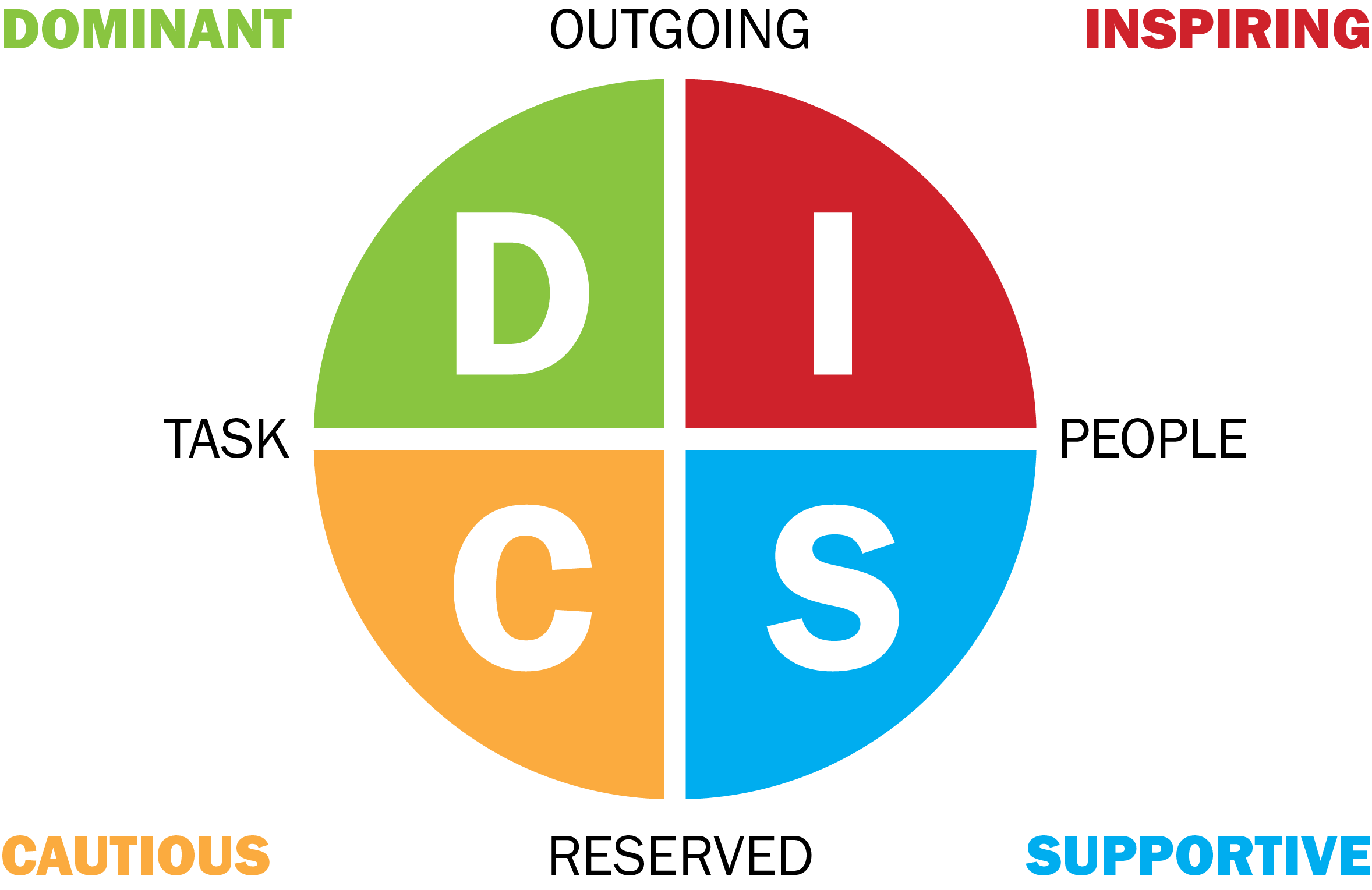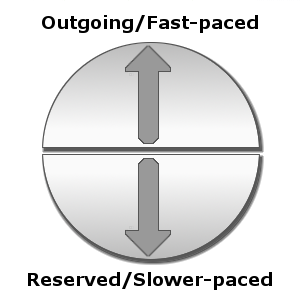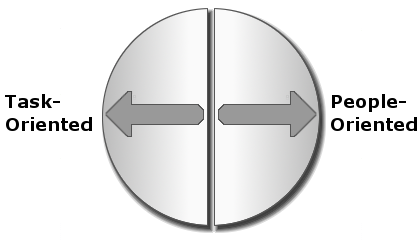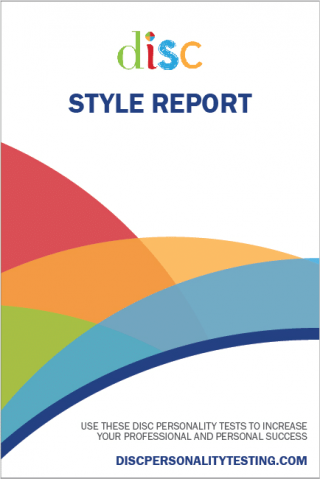A Brief History of the DISC Model
The foundation for the DISC model comes from the work of a Harvard psychologist named Dr. William Moulton Marston in the 1920’s. He developed a theory that people tend to develop a self-concept based on one of four factors — Dominance, Inducement, Steadiness, or Compliance. Marston’s theories form the basis on which DISC assessments and reports are built.
The DISC Model is Based on Normal Behaviors
To graphically illustrate the DISC concept, we represent the range of normal human behaviors and perspectives with a circle as shown in Figure 1. When we say “normal human behaviors and perspectives,” we mean behaviors and perspectives derived from normal, healthy psychology. To effectively use the DISC model, remember that nothing in the DISC model describes or discusses any type of psychosis, mental illness, or psychological abnormality.
Figure 1: The Range of Normal Behaviors
The DISC Model is Built on Understanding Two Basic Drives
We start our description of the DISC model by defining two key motivators that tend to drive behaviors. One motivator is called the motor drive (or pace drive) and the other is called the compass drive (or priority drive).
Motor Drive (also called the Pace Drive)
Divide a circle in half horizontally as shown in Figure 2. The upper half represents outgoing or fast-paced people. The lower half represents reserved or slower-paced people. Outgoing people tend to move fast, talk fast, and decide fast. Reserved people tend to speak more slowly and softly than outgoing people, and they generally prefer to consider things carefully and thoroughly before making a decision. (Remember that these descriptions of behaviors are tendencies rather than absolutes.)
Figure 2: Motor Drive
The shading of the circle from lighter to darker indicates varying intensities of these drives as you move from the center to the ends. Close to the middle of the circle would represent less intensity in the motor activity, and we use lighter shading towards the center. Moving towards the outer edge of the circle represents higher intensity in the motor drive, and we use darker shading. A person’s personal perspectives and behaviors could lie anywhere along this line.
Most people will exhibit a bit of both of these traits depending on the situation they find themselves in. Even though this is usually true, most people will tend to exhibit more of one trait or the other – even if it is only slightly more.
Compass Drive (also called the Priority Drive)
The circle can also be divided vertically as shown in Figure 3. The left half represents task-oriented people. The right half represents people-oriented people. Task-oriented people tend to focus on logic, data, results and projects. People-oriented people tend to focus on experiences, feelings, relationships, and interactions with other people.
Figure 3: Compass Drive
Just as with the Motor drive diagram, the shading of the arrows from lighter to darker indicates varying intensities of the Compass drive. Close to the midline shows less intensity in the Compass drive, therefore light shading. Towards the outer edge shows more intensity in the Compass drive, therefore darker shading.
There are Four Basic DISC Styles or Types
When you combine the drawings for the Motor and Compass drives, you get the circle of normal behaviors and perspectives divided into four quadrants as shown in Figure 4. This figure, sometimes called the DISC circle, represents the full graphical description of what is commonly referred to as The DISC Model of Human Behavior.

Figure 4: The DISC Model of Human Behavior
Notice that each quadrant of the DISC circle has descriptive words attached to it. These descriptive words attempt to capture the typical behavior exhibited by people who have the combination of motor and compass drives that corresponds to that quadrant. These descriptive words show behavioral traits or tendencies that describe each quadrant of the circle.
To make the quadrants easier to discuss, we often call each quadrant a behavioral type or style. While it is not strictly or technically accurate from a clinical psychology standpoint to use the phrase personality type with this model, the phrase is often used in normal, everyday conversation. We prefer to use the phrase behavioral style because it more accurately fits the model and its theoretical basis.
The main characteristic trait for each behavioral type (quadrant of the DISC circle) is used as the representative word for that type or style of behavior:
- Dominant,
- Inspiring,
- Supportive, and
- Cautious.





Are there any peer-reviewed scientific studies that validate this approach?
Hi Jurgen,
Thanks for asking.
Honestly, I don’t know. The model has been around since before I was born and the first assessment using the model was developed in the 1950’s. It’s been pretty well tested and evaluated, but I don’t know about peer-reviewed studies.
Since we don’t promote using the model for diagnostic or clinical applications, I’m not sure that it matters though. The model and the assessment have somewhere in the range of 90% face validity. For our purposes of finding practical ways of understanding and communicating with people who have different perspectives, face-validity testing is sufficient.
If we wanted to use the model for some type of clinical evaluation or psychological diagnosis, then peer-reviewed studies would definitely make sense. That’s just beyond the scope of how we promote and apply the information.